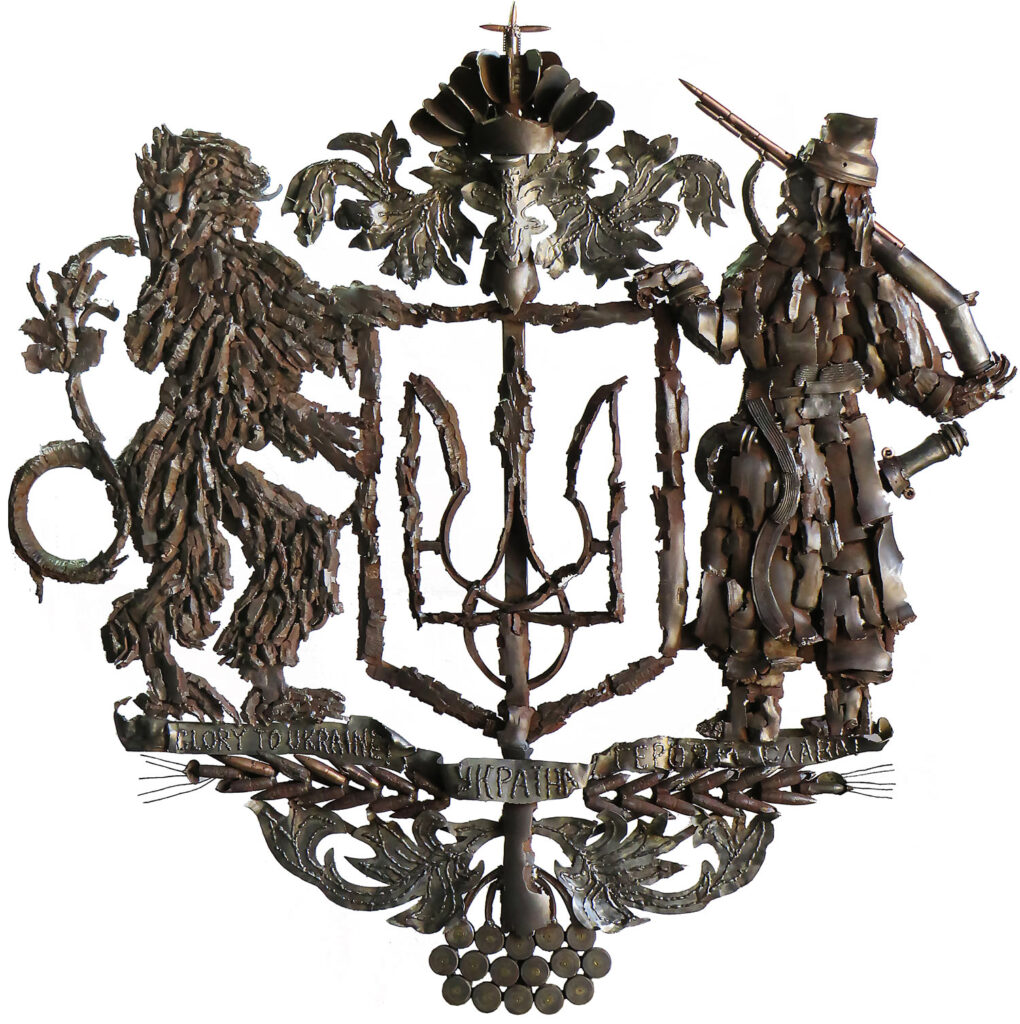
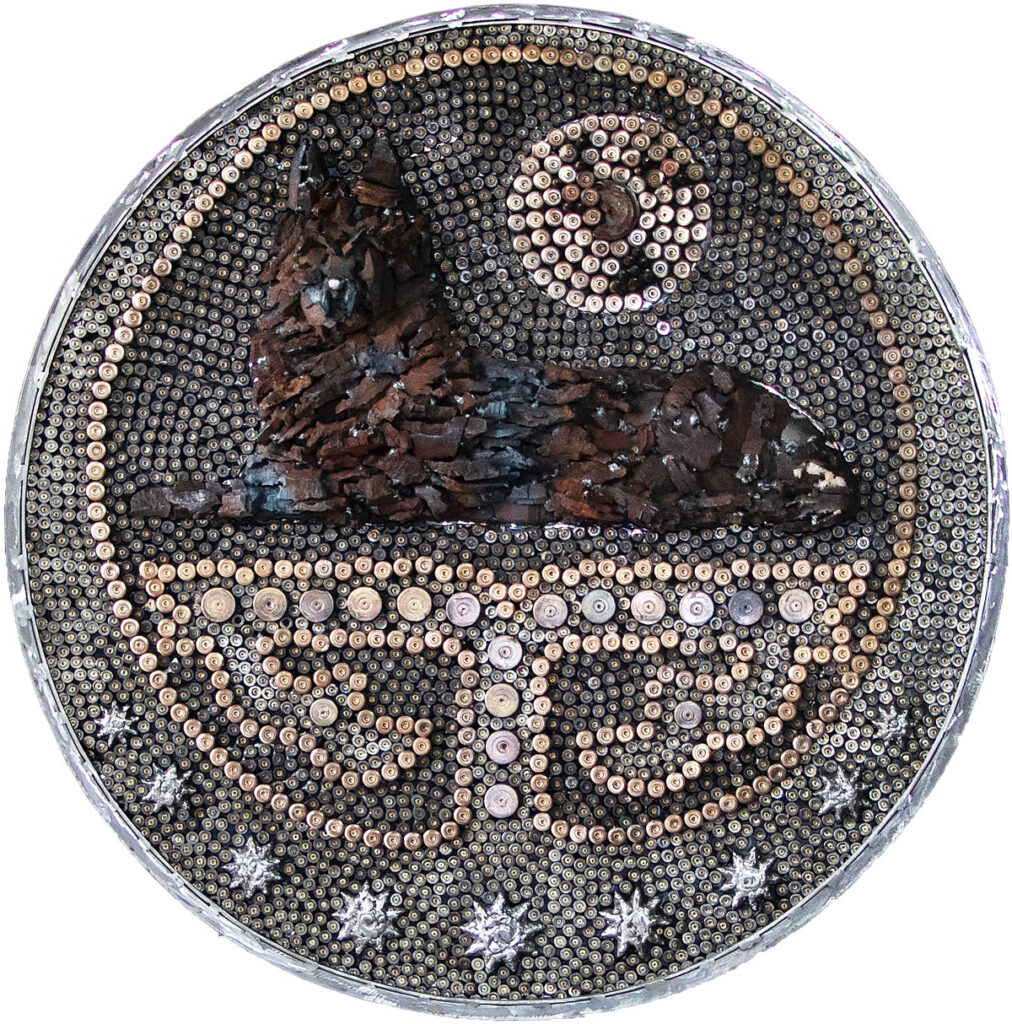
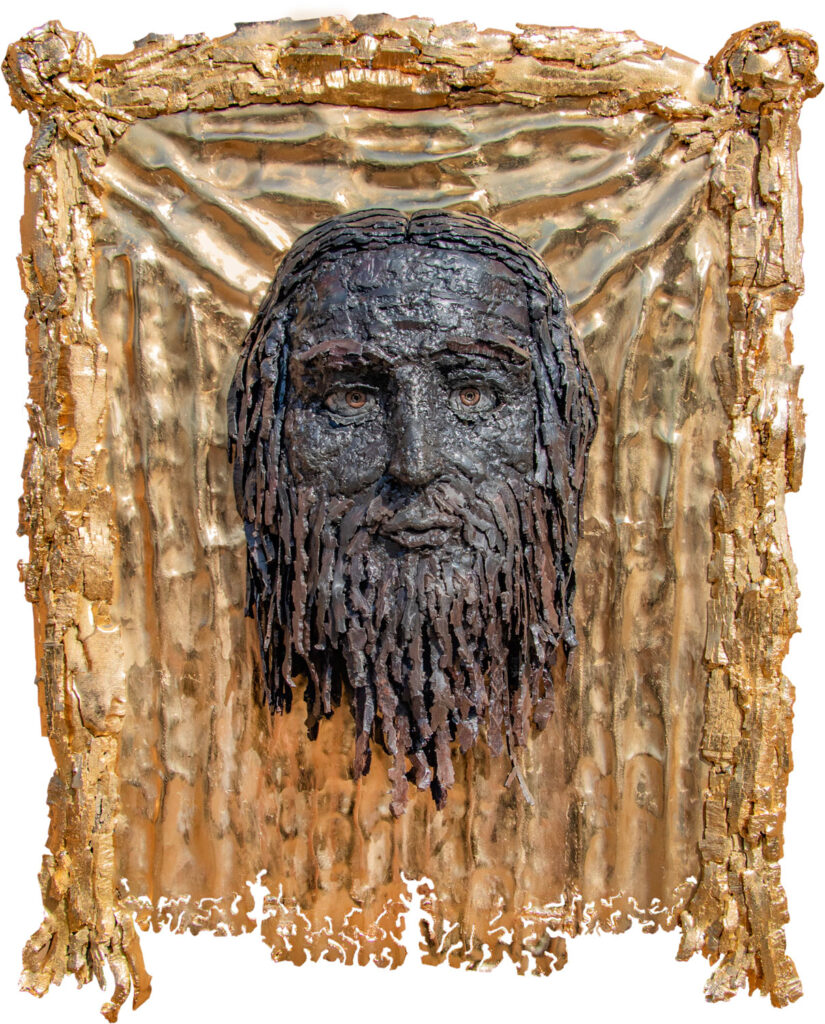
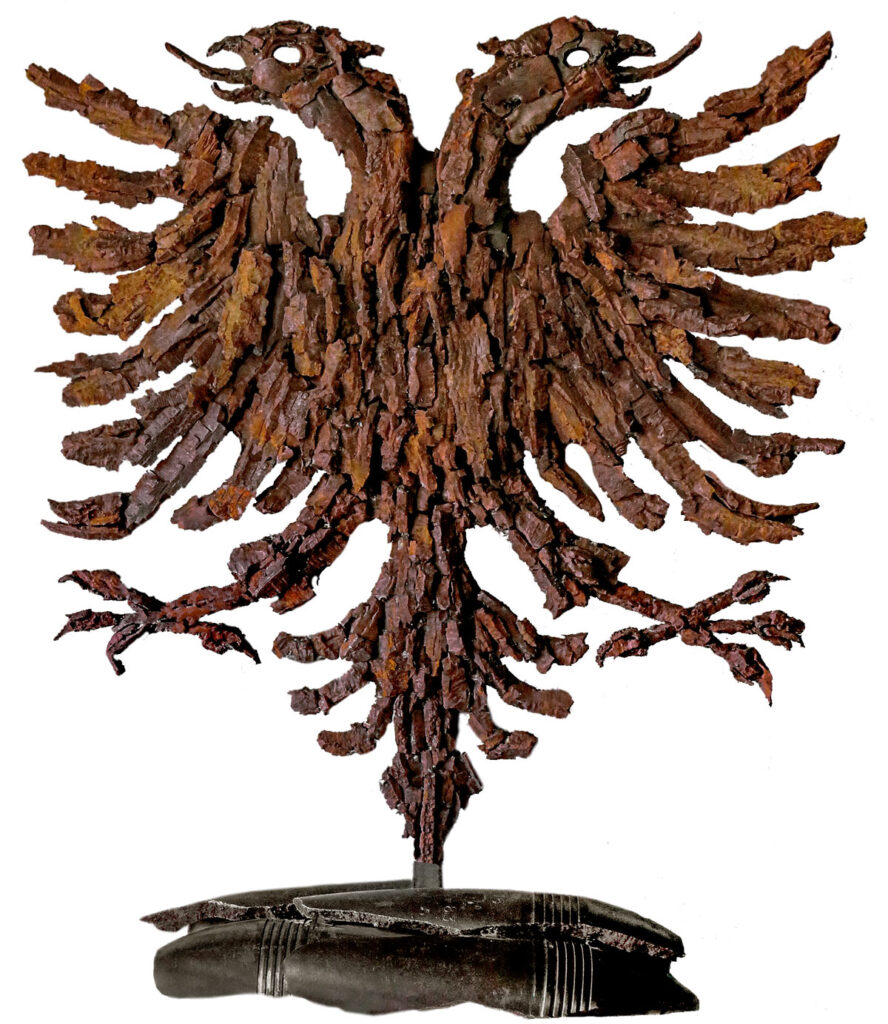
“Ashes of War” by Sergey Melnikoff: A Critical Analysis as a Cultural Phenomenon
1. Artistic Concept
The “Ashes of War” series represents a unique artistic reflection on contemporary armed conflict through sculpture. By using shrapnel and fragments of weaponry as primary materials, destruction is transformed into creation, emphasizing both the tragedy of war and the resilience of the human spirit.
The central artistic strength of the series lies in the contrast between the fragility of human life and the hardness of metal, between destruction and the beauty of form. The sculptures convey not only physical but also spiritual trauma, eliciting a profound emotional response from viewers.
2. Symbolism and Cultural Context
“Ashes of War” operates on multiple symbolic levels:
Anti-war message: each piece serves as a stark reminder of the futility of violence and the necessity of peace.
Historical memory: materials and forms are associated with specific events of contemporary conflicts, turning the art into a chronicle of the times.
Philosophical dimension: the series raises questions about human responsibility, the consequences of destruction, and the potential for restoration.
Thus, Melnikoff’s works are not only aesthetically powerful but also socially significant cultural artifacts, reflecting the tragedies of the 21st century.
3. Social Impact
The “Ashes of War” series actively engages with society:
Educational role: works are used in discussions on the consequences of war, historical conflicts, and peace-building.
Charitable initiatives: some projects are linked to support for children and communities affected by armed conflict, turning art into a tool for social aid.
Global resonance: the series speaks to international audiences, translating personal and national tragedies into a universal artistic language.
4. Artistic Innovation
Melnikoff introduces innovative techniques:
Use of shrapnel and fragments as primary materials, adding authenticity and dramatic impact.
Integration of sculpture with multimedia and interactive installations, allowing viewers to immerse themselves in the experience of destruction and restoration.
Play with scale and space, from intimate sculptures to monumental forms, creating a sense of presence and engagement.
5. Cultural Phenomenon
“Ashes of War” is not merely a series of sculptures but a cultural phenomenon because it:
Reflects collective trauma of contemporary society through an artistic language.
Serves as a bridge between art, history, and social practice.
Creates a platform for international dialogue on war, peace, and humanism.
Integrates contemporary art into public consciousness as a tool for understanding global conflicts.
6. Conclusion
Sergey Melnikoff’s “Ashes of War” series demonstrates how contemporary sculpture can be simultaneously aesthetically compelling, philosophically profound, and socially significant. This is a new chapter in anti-war art, where materials of war are transformed into forms of memory, protest, and hope.
Melnikoff produces works that become cultural markers of our era, fostering dialogue between artist, audience, and the world. “Ashes of War” stands as a symbol of resilience and transformation, making contemporary art not only visually striking but socially meaningful.
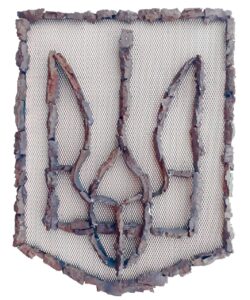
Honor Through Art
If you’re inspired by the unique technique of crafting modern art from the “ashes of war,”
you can commission a custom piece—be it your national emblem or corporate logo.
Ideal for private collections, distinguished gifts, or tributes of national significance.

